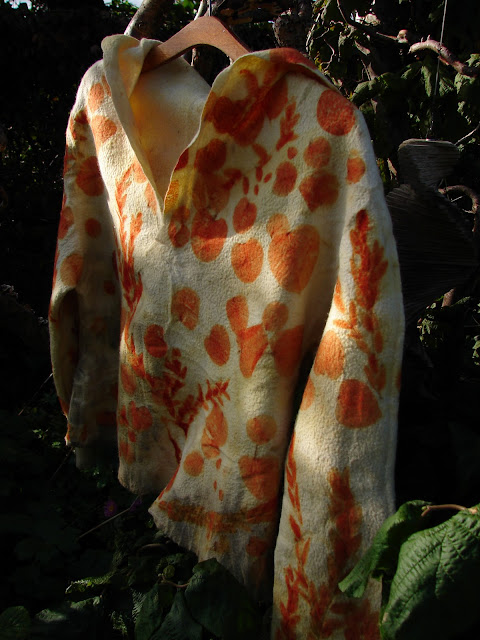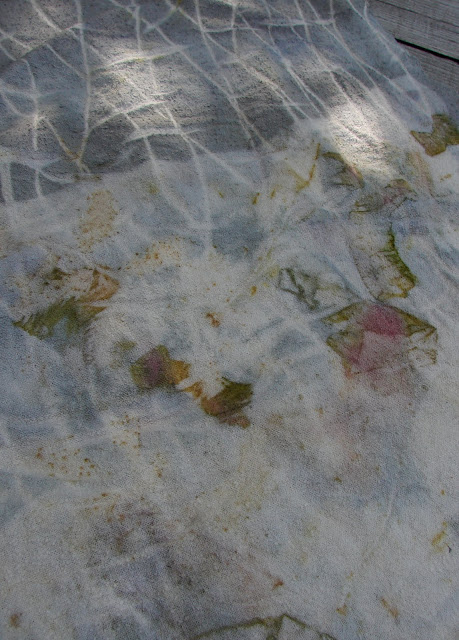I'm a bit obsessed with mending, and I try not to discard clothes or
fabric - (well, anything at all) that can be of some use. When it comes
to childrens clothes, I feel the necessity for re-using the strongest.
Children grow up so fast, and are in need of new clothes quite often.
They wear out their clothes by crawling, climbing and playing (or I
certainly hope they do). And some parents are quite occupied by
childrens fashion and consequently replace their chidrens wardrobe
regularly. The latter seems to be quite prevalent in these parts of the
world. So much fabric - so little used. Let's use it all up, shall we?
Well, all that mending and other initiativs to re-use their clothes may
just not be something children take notice of, unless they're actually
involved in doing so. And I feel the importance of not only living
sustainable (or trying my best to) - but also encourage my children to
understand the concepts of sustainability. Not by telling them, but by
simply doing it.
We went for a walk in an nearby area, formerly gravel pits and now an
recreational area not being cultivated or interfered with in any way.
Everything growing there has come up from seeds waiting in the soil for
years.
We picked and gathered what we felt like, some windfallen leaves and
twigs from the ground, and also gently picked some flowers and small
twigs from bushes.
We had some not so good looking woolen underwear that needed
refreshment. I soaked them in (cold) water added a little bit of Alum
for a couple of days. Rinsed and squeezed them - and now they were ready
to adorn with our findings. I didn't take pictures, but the children
were free to do as they pleased, placing leaves, flowers and some
berries on the fabric where they wanted to. As was I.
When we were satisfied with our work, we rolled up the under shirts tightly and secured the bundles with some string.
A couple of days before a kind neigbour allowed us to pick some twigs of
their Berberis - (vulgaris, I think). Quite a pricking sort of schrub.
Twigs and leaves had been soaking for a day and then simmered an hour
or so before leaving it for another day to get all the potential dye
stuff from the leaves. Then we put our bundles in this »soup«, put it
over the heat and let it simmer for an hour. The most challenging part
was to let the bundles stay in the pot to the following day - but we
managed!
I think the result is lovely, the kids had fun and we're going to do this a lot more.

























































